Victorian era fashion refers to the styles and trends of clothing worn by the people of Britain and the British Empire during the reign of Queen Victoria. The Victorian era began in 1837 and lasted until the Queen died in 1901. The fashion of the time reflected the changes of the period and encompassed a wide range of styles.
Table of Contents
What is the Victorian Era Fashion?

When you think of the fashion of the Victorian era, corsets, petticoats, full skirts, bonnets, and top hats spring to mind. The era was defined by intricately made colorful clothing that changed to mirror the transformations and advances of the Victorian period.
The Victorian age was a time of remarkable social, and economic transformation in Britain, driven by the industrial revolution. During this time, fashion played a pivotal role in society, as was used to define one’s social status.
Just as life changed drastically for the people of the Victorian era, so did the fashion of the time, changing every few decades. What people wore was dictated by class and the time of day, and activity being performed. Modesty and prosperity were highly valued during the era, and women’s fashion embodied this.
Victorian fashion also included clothing worn for certain occasions, such as mourning. Mourning Black refers to the color and style of clothing Victorian men, women, and children had to wear if they had lost a family member.
Victorian-era clothing adhered to strict etiquette that mirrored the extremely strict social etiquette of the time.
What Influenced Victorian-Era Fashion?

Victorian fashion was unlike the fashion trends during the reign of other British monarchs and especially nothing like the garments worn during the reign of Queen Elizabeth Regina. Victorian fashion was as its very name implies influenced by the first fashion icon of the period; Queen Victoria, who wore what was considered to be a fashionable silhouette. Queen Victoria favored modest styles, with a slim waist and minimalistic in their design.
The fashion of the time sought inspiration from literature, architecture, art, and societal issues such as changing the perception of gender roles in Victorian England. During the Victorian era, clothes became cheaper and faster to make, they also became a way for a person to define and declare their social status.
The Victorian era was a time of growth and technological advancement. Fashion technology in particular grew during this time, with the mass production of the sewing machine and the development of synthetic dyes which transformed the fashion industry forever.
During this era, fashion styles became more accessible as advances in printing technology made fashion magazines more widely available.
Another thing that impacted the fashion of the period was the introduction of fixed-price department stores in the late Victorian period. Victorian women appeared to wear dresses, but in actuality, they were not dresses at all. Women wore several items of clothing, each separate that, when worn, looked like a dress.
Corsets
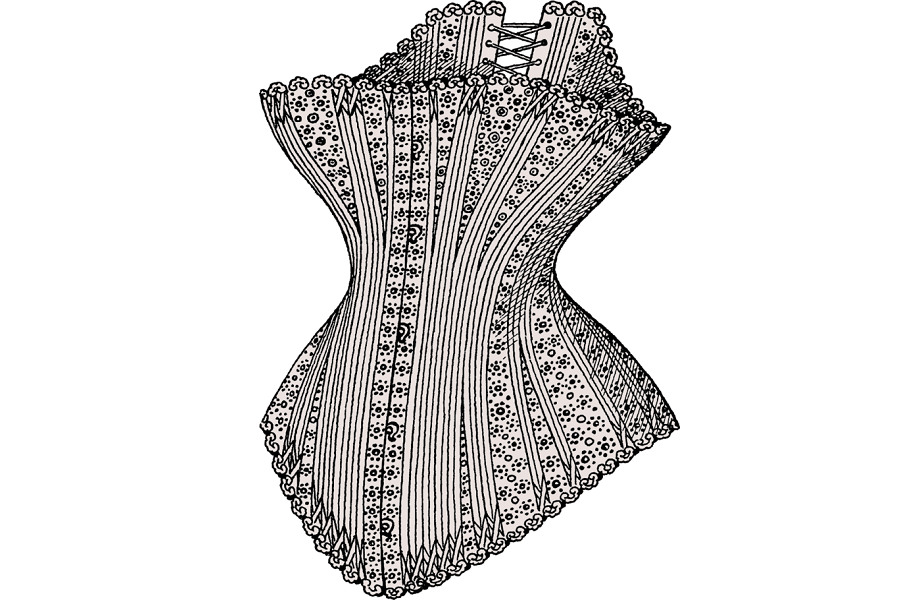
To accompany the beautifully adorned skirts, women wore tightly fitted corsets under which they wore a chemisette. Over the corset, women wore a bodice. A bodice covered a woman’s torso, from her neck to her waist while the chemisette filled in the neckline.
The corsets worn by women during this time were highly restrictive, laced rightly to achieve an hourglass figure. As fashion changed, corsets changed, but marginally. The style of the corset worn, and how tightly it was laced, depended on the silhouette one wished to achieve.
This style of dressing was designed for the sedentary lifestyle enjoyed by upper-class Victorian women.
Victorian fashion for women was designed to emphasize small waists, manufactured through the use of tightly laced corsets if they were not present. Corsets of this era functioned to train the waist so that the fashionable of the era could be attained. To do this, the corsets contained boning.
Clothing worn by middle-class women in the Victorian era was similar to that of the upper class, however, there were slight differences in the accessories worn.
The Neck Line

The neckline of women’s dresses varied depending on social class and the time of day. The dresses of the time usually sported a style of neckline called the Bertha. This low shoulder neckline exposes a woman’s shoulders, with swathes of fabric resting on their upper arms. The bertha was often accompanied by flounces of delicate lace.
This revealing style of neckline was only allowed to be worn by wealthy and middle-class women. Lower-class women were not allowed to show as much flesh.
Womens Fashion
Women’s clothing during the Victorian age showcased distinct differences between the upper and lower classes. While the upper class adorned themselves in elaborate and restrictive garments, the lower classes opted for cheaper, more practical clothing suited for the demands of their daily activities.
The dresses of the era were designed to showcase particular silhouettes that were fashionable throughout the era. At the beginning of the period, the artificial hourglass silhouette was fashionable, achieved through the use of boned corsets, tightly laced.
Towards the end of the 19th century, women’s clothing became slightly less restrictive, allowing room for acceptable feminine pursuits which included tennis and cycling. Although women’s fashion was still highly restrictive, and dictated by the social norms and etiquettes at the time, women began taking a stand.
The Rational Dress Society
Although beautiful, Victorian fashion for young ladies and women, especially of the upper class, was extremely restrictive. The nipped-in waists, beautiful lace sleeves that limited the movement of a woman’s shoulders, and dramatic bell-shaped skirts, oppressed women.
In response to the incredibly high beauty standards that affected women’s health and freedom of movement, the Rational Dress Society was founded in 1881. The organization aimed to reform the impractical and restrictive clothing norms enforced on the women of the period.
They sought to reform the use of corsets, the heavy fabrics of the full skirts, and the petticoats which were not only dangerous to a woman’s health but to their safety. Several women were killed while wearing the fashionable full skirt style, as their skirts were set on fire.
The movement did manage to contribute to the gradual shift towards clothing that was not as restrictive. However, that did not stop fashion in the late Victorian period from being extremely restrictive with the introduction of the hobble skirt.
This terrible fad meant that a women’s lower and upper body movements were restricted until they could only hobble about.
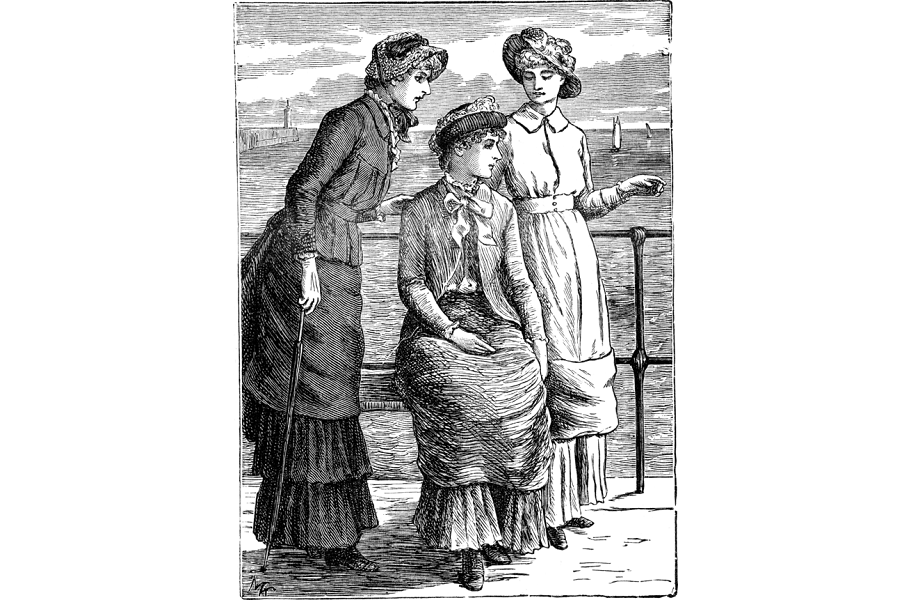
Evolution of Dress Style During the Victorian Era
The dresses of the Victorian era were all about the fashionable silhouette! When Queen Victoria ascended to the throne in 1837, the silhouette of women’s dresses was one of an elongated, slim torso, with wide, bell-shaped, full skirts.
To achieve this look, women had to wear several heavy petticoats underneath the skirts. Women wore tight corsets and skirts, the style of which evolved throughout the period. The necklines of the early Victorian period were modest, often high, and accompanied by collars or fichus.
Early fashion styles gave way to softer, more feminine styles. During the Romantic period of the Victorian era, dresses featured dropped shoulders, and wide sleeves that were delicately trimmed, however, they still favored a slim waist.
The silhouette changed during this period, featuring a waistline that was slightly raised, defining the silhouette and moving away from the more natural shape of early fashion. The shirts during this time had a gentle slope and were adorned with ribbons, lace, and floral decorations.
The Introduction of the Crinoline
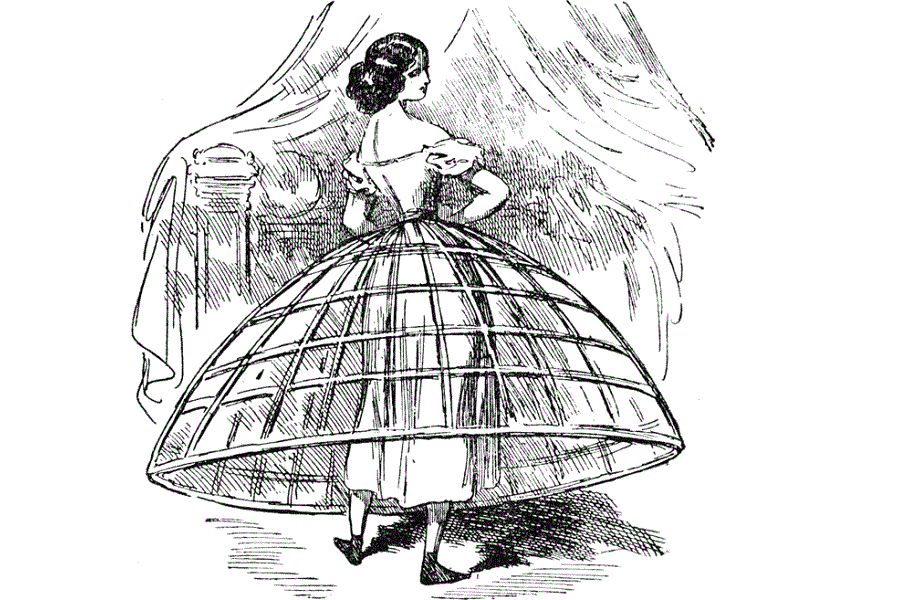
Around 1856 the crinoline was introduced, quickly revolutionizing women’s fashion.
The heavy petticoats worn by women of the Victorian age were replaced by the crinolines. These are a type of hooped skirt or cage-like structure worn underneath the skirts, allowing women more freedom to move their legs while retaining the favored bell shape.
Cironlines gave the dresses of the Victorian era a distinctive beehive appearance and meant that women’s skirts expanded far out from their bodies. Skirts continued to be adorned with pretty decorations.
The Bustle

Dress styles slowly changed again, moving away from full, rounded skirts to a more figure-shaping, structured style worn over a bustle.
Late Victorian fashion featured bustle dresses, which were skirts worn over a padded petticoat that transformed the fullness of the skirt. This new fashion concentrated the fullness of the dress to the back while adding volume and shape to the overall appearance.
The style of the skirts worn over the bustles was narrow in the front, with the silhouette resembling an S-shape. Additionally, draped fabric and trains became popular adding a touch of drama and elegance to Victorian fashion.
Sleeves
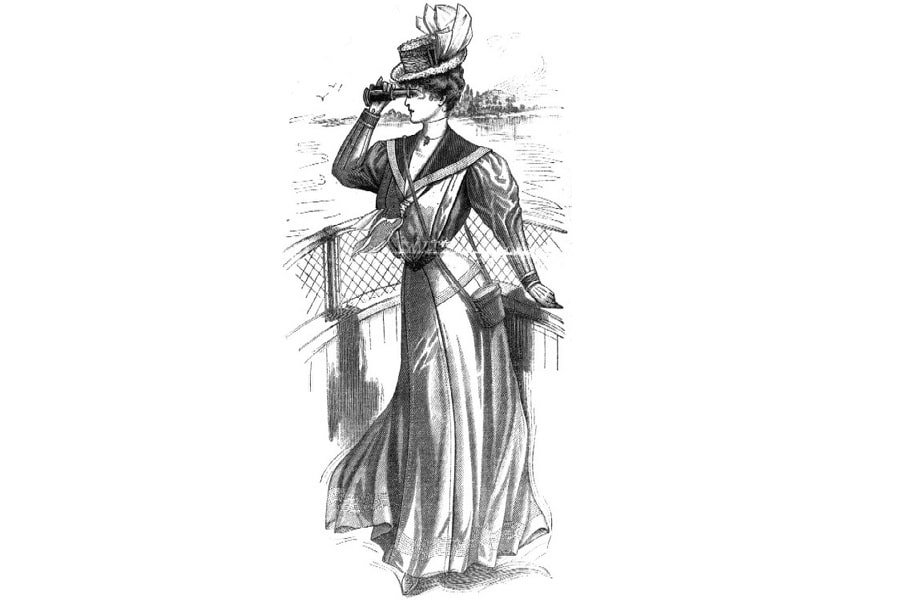
At the beginning of Queen Victoria’s reign, the sleeves of Victorian dresses were tight, mirroring that of the nipped-in waist of the corset. The movement of women’s shoulders during this time was restricted as the sleeves of their dresses were fitted tightly to their arms, drooping at the shoulder.
With the advent of the crinoline, the sleeves on dresses transformed. Instead of being tightly fitted to the wrist and streamlined at the shoulders, they became larger, flaring at the elbow, creating a draped bell shape.
The Aesthetic Movement
In the late 1800s people of the Victorian era wished to move away from the aesthetics that had defined the Industrial Age. The Aesthetic Movement emphasized beauty and art for ‘art’s sake,’ this shift in mindset was seen in the fashions of the time.
The Aesthetic Movement brought with it a move towards simpler, more natural styles. The style of dresses focused on flowing lines, with delicate details. The colors of the dresses changed, favoring soft pastel colors with floral patterns and asymmetrical draping.
Evening Gowns
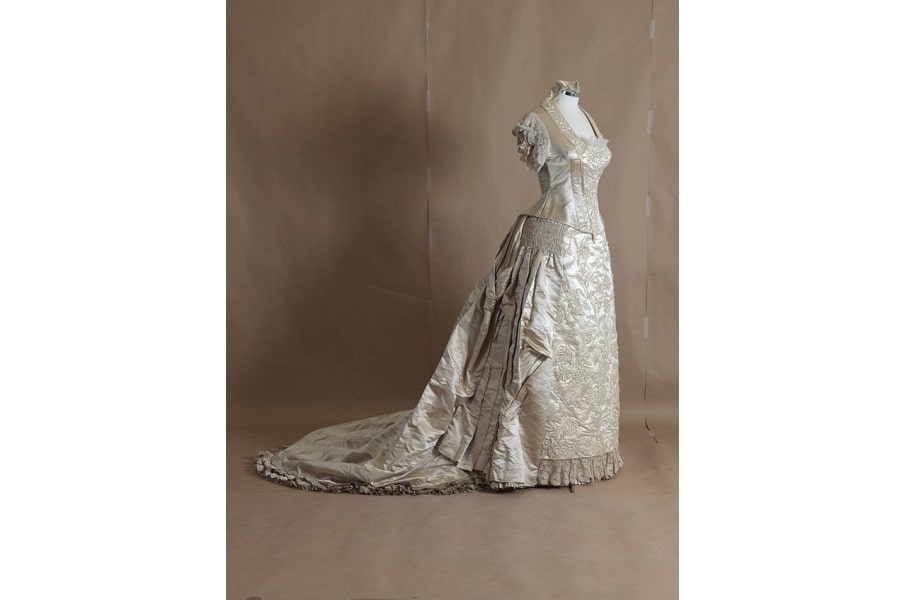
The gowns worn for evening meals and formal functions by upper-class women during the Victorian era followed the styles of the day dresses worn but were far more extravagant.
Women’s gowns were designed to show the wealth and social status of the wearer. They were made from luxurious fabrics, had intricate embellishments, and later in the period, low-cut necklines.
The gowns were often sleeveless or had short sleeves in the Bertha style to allow women freedom of movement to dance and eat. The elaborate evening gowns were often accompanied by gloves, fans, and over-the-top jewelry to complete the look.
The gowns worn for formal associations towards the end of the Victorian age often had puffed sleeves. Under these bell-shaped sleeves, women wore engagements which were fake sleeves made from delicate lace or linen.
What Were Victorian Dresses Called?
Victorian fashion was made up of several styles of dresses that followed the social norms of the period. There was the day dress, tea dress, morning black, bustle dress, and riding habit. The day dress was worn for everyday activities. They were usually made from lightweight material but consisted of a structured bodice.
Tea gowns were a much-loved favorite for Victorian women. These dresses resembled the Regency style of dress and were not as structured or restrictive as other dresses. Tea gowns were worn at home and were acceptable attire for receiving guests in the parlor for afternoon tea.
During more somber times, women would do dresses made from black fabric. These dresses were to be worn for a certain amount of time. When they were allowed to resume their normal attire, the women of the late Victorian period favored the bustle dress.
Although middle-class and upper-class women of the Victorian age had very little freedom, horse riding was considered to be a respectable use of their time. Of course, women had to uphold their respectable appearance and so the Riding Habit was introduced.
Riding habits consisted of tailored jackets, usually made from tweed, and included corsets and full skirts.
Hats, Shoes, and Gloves
Hats, shoes, and gloves were important accessories for women (and men) in the Victorian age. They were designed to complement the overall look of both day dresses and formal wear.
Hats
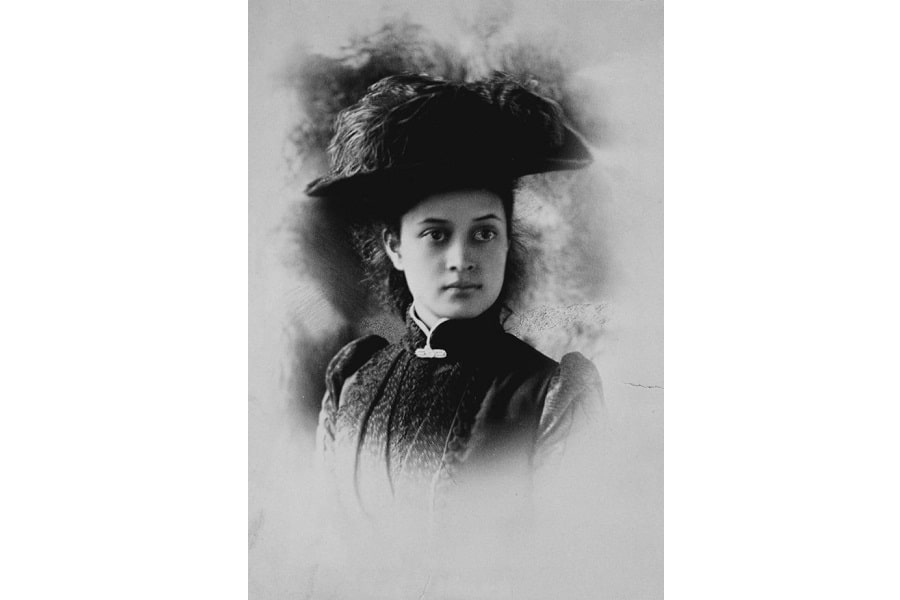
Hats were perhaps the most important accessory worn by Victorian women. There were different types of hats in Victorian fashion, and were worn indoors and out and for formal occasions. Hats were often elaborately decorated with satin flowers, ribbons, bows, and feathers.
During the early Victorian period, the most popular type of hat worn were bonnets. Worn during the day, bonnets were usually made from straw and silk and were characterized by a wide brim that was tied under the chin with ribbon. Straw and fabric bonnets, although popular during the era, were not Victorian inventions.
READ MORE: Inventions by Women: Cataract Treatment, Syringes, Rocket Fuel, and More!
As the era progressed, other hats became popular, including straw hats, boaters hats, and toques. Straw hats were a popular choice and worn during the day in the summer months. Straw hats worn by women were often secured with a ribbon or hat pins.
Boater hats became popular towards the end of the period and were typically made from stiff straw or felt. They were a unisex accessory that had a flat crown and a wide, flat brim. They were adorned with a wide set ribbon and a bow.
Torques were a small type of bonnet that became popular towards the end of the 19th century. These conical-shaped hats were worn towards the back of the head and were decorated with ribbons or silk flowers.
Shoes
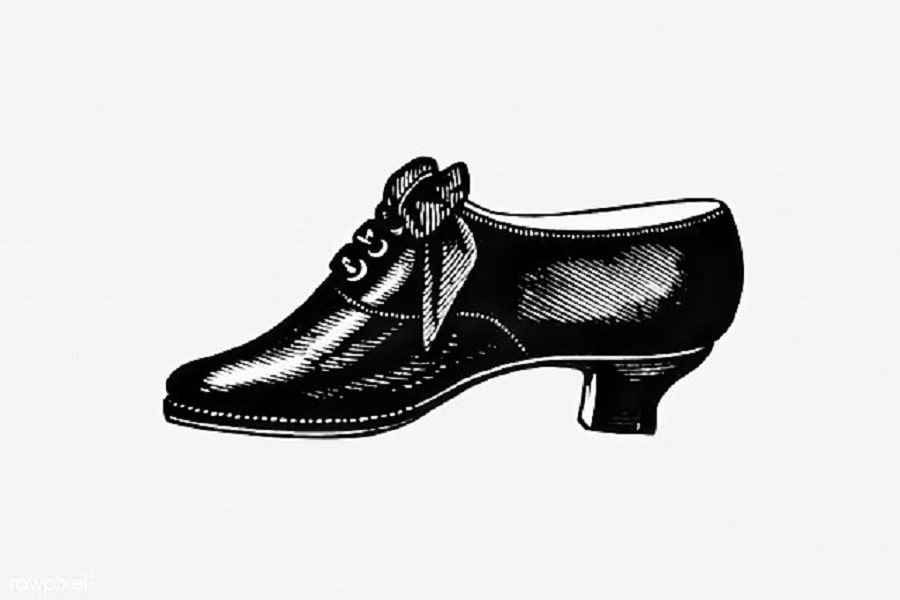
At the beginning of the Victorian era, women’s shoes were typically made from white or black satin. These satin slippers were narrow and heelless. As the period progressed, and with its technology, leather became the more popular choice. The new leather shoes had a narrow, pointed toe. The most common type of shoe worn was the button-up boot.
Shoes, like dresses and hats, were often decorated with ribbon, and, thanks to the sewing machine, had delicate flowers sewn onto the sides and lace frills on top.
Gloves
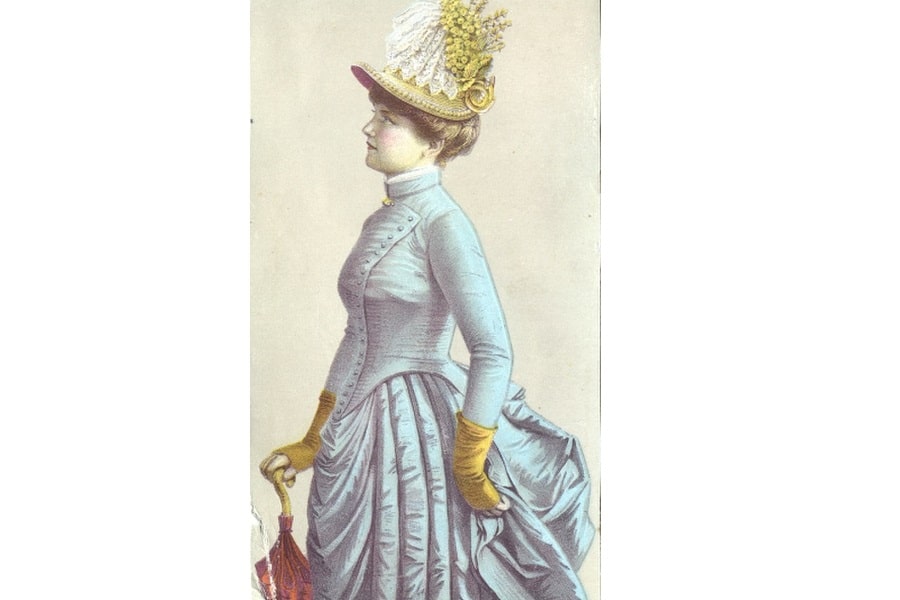
In the age of Queen Victoria, gloves were considered an essential accessory, worn for both practical and fashion purposes. There were many rules surrounding gloves, which if ignored or bungled, a woman could be branded vulgar, at worst, unfashionable at best.
For women, gloves signified refinement and etiquette, worn when attending formal occasions and when venturing outdoors.
The Victorians had rather lofty ideas when it came to hands. The ideal hand was shapely and had tapered fingers, blue veins, and rosey nails, gloves, therefore, were an extension of this ideal. Wealthy women wanted to avoid being mistaken for lower-class women, who usually had tanned, rough skin.
Just as with corsets and sleeves, gloves were often too tight for women, as they wore a size smaller to achieve the ‘shapely’ appearance Victorian society preferred.
There were different styles of gloves for different occasions, including gloves to be worn during the mourning period, and matching mourning black. Gloves could be made from leather, satin, and later, cotton. Gloves could be long, reaching up the elbow, fashioned by buttons, or stopped at the wrist.
READ MORE: Who Invented the Cotton Gin? Eli Whitney and Cotton Gin Impact on America
Men’s Fashion
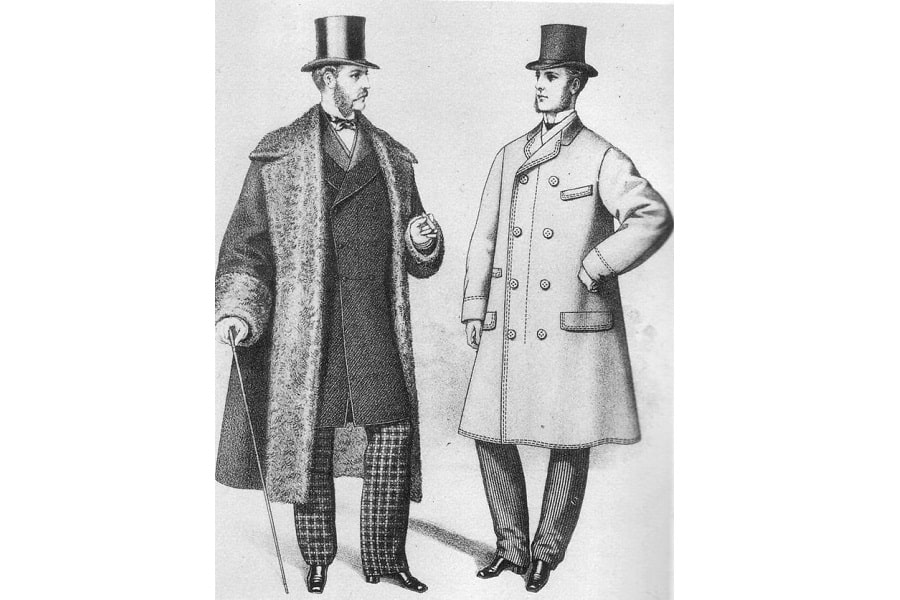
Just as women’s fashion depicted ideas surrounding a woman’s role in society, men’s fashion was designed to do the same, reflecting Victorian ideals of masculinity. Similarly, the different social classes wore different styles, distinguishing them from one another.
Victorian men, like women, had different styles of clothing to be worn at different times of the day and had specific types of hats, gloves, and jackets to be worn when hunting, working, traveling, and so forth.
In the 19th century, just as women’s fashion was influenced by Queen Victoria, men’s fashion was influenced by her husband, Prince Albert. In the 1840s men wore calf-length, tight-fitting, frock coats under which they wore a linen shirt and a single or double-breasted vest or a waistcoat.
Men’s shoes throughout the era were leather boots of varying lengths and heel heights. The boots possessed a narrow toe and could be fastened with buttons, hooks, and laces.
Early Victorian Era (1837 – 1860)
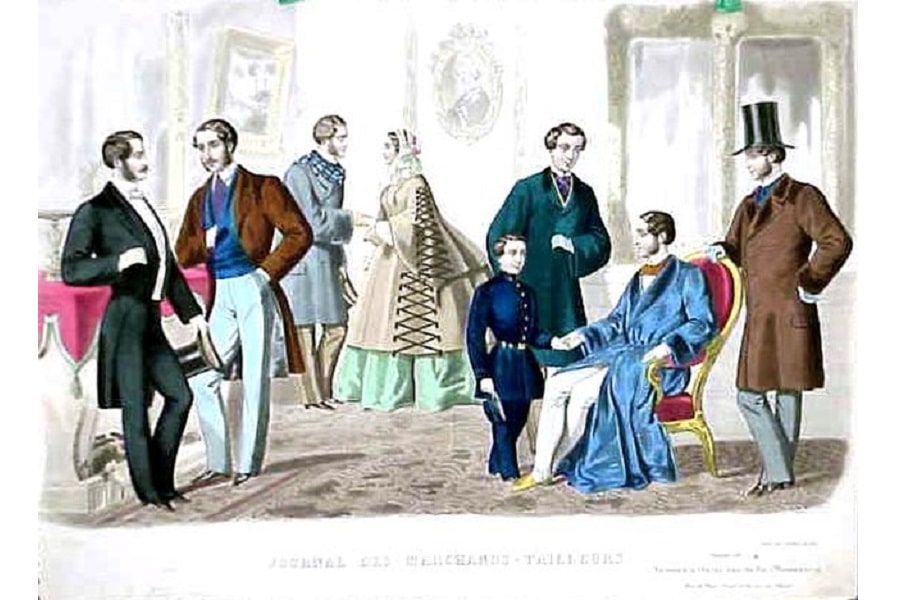
The beginning of the Victorian era saw men’s fashion influenced by the Recent style of clothing; the styles were simple and tailored. Later, fashion became more formal and structured, reflecting the emphasis on prosperity and social status within Victorian society.
For formal occasions that took place during the day, Victorian men wore light trousers and a cutaway morning coat. This type of coat had a tailored and fitted silhouette that featured a cutaway front, with the front edges of the coat cut diagonally, curving away from the center.
The coat had longer tails at the back, extending just below the waistline.
The cotton or linen shirt worn by men under their waistcoat and morning coat would be finished with a cravat worn around the neck. A cravat was a wide piece of fabric, typically made of patterned fabrics such as silk or linen.
For formal events that occurred in the evening, men wore dark tail coats, top hats, and gloves. The top hat became standard wear for upper-class men, day or night. The top hat worn during the day had a slightly wider brim to offer protection from the sun. Men belonging to the lower class wore bowler hats, rather than top hats.
Mid-Victorian Era (1860 – 1880)
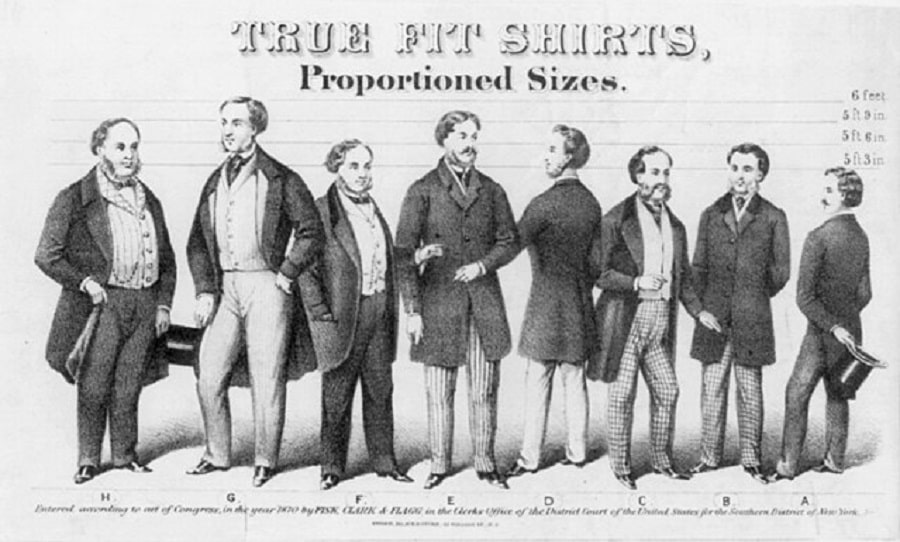
During this period the frock coat continued to be a popular choice, however, it changed slightly, becoming shorter. The sack coat, which was a loose-fitting, less formal coat, was introduced during this time and became a popular choice for daytime attire.
This period saw a change in the style of shirts worn, as from the 1850s they possessed high turnover collars. These collars were finished with four-in-hand neckties that flocked out at the ends, or neckties tied into a bow.
By the 1870s, the 3 piece suit had become the standardized attire for men and the cravat eventually gave way to the necktie completely, as the period progressed.
Late-Victorian Era (1880 – 1900)
During the latter part of the 1800s men’s clothing changed drastically. It was towards the end of the era that the dinner jacket became the standard dress for more relaxed formal occasions, which was completed with a white bowtie. However, more formal occasions still required men to wear dark tail coats and trousers.
While pursuing outdoor activities, men wore a tweed Norfolk Jacket and donned knee-length jackets made from contrasting velvet. Additionally, the winter outerwear would have fur collars. Calf-length overcoats were also a popular choice.
Why Was Victorian Fashion So Important?
What people wore was important during the Victorian era for a myriad of reasons, first and foremost it acted as a visual indicator of the wearer’s social status. You could tell upper-class women apart from lower-class women based on what they wore.
The upper class showcased their wealth by wearing elaborate creations, while the working class wore practical items. Victorian fashion was deeply intertwined with the social norms and ideals of the time, where modesty and propriety were celebrated.
Victorian fashion was deeply rooted in gender roles and helped to enforce the role of men and women in Victorian society.
Gender roles in the 19th century shifted from previous periods, becoming more defined. Women began to perform domestic duties, which translated to lower-class women working in homes, and upper-class women running the household. The styles and trends of the Victorian era mirrored this.